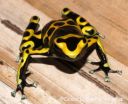(Press-News.org) Protein aggregation, generally associated with Alzheimer's and mad cow disease, turns out to play a significant role in cancer. In a paper published in Nature Chemical Biology, Frederic Rousseau and Joost Schymkowitz of VIB, K.U.Leuven and Vrije Universiteit Brussel describe that certain mutations of p53, an important tumor suppressor, cause the protein to misfold in a way that the proteins start to aggregate. This not only disrupts the protective function of normal p53, but of other related proteins as well.
p53 plays a central role in protection against cancer
In the study, the focus was on the p53 protein which plays a key role in protecting the body against cancer. If p53 works normally, it controls cell division. If p53 control ceases - e.g. when there is a mutation in the protein - the cells start to divide in an uncontrolled manner and this may result in a tumor. Mutations in p53 are observed in about half of cancer cases, making the protein an important target in the development of new cancer therapies.
Mutated p53 aggregates
"We have revealed a new mechanism for the action of mutant p53," Joost Schymkowitz and Frederic Rousseau of VIB, Vrije Universiteit Brussel and K.U. Leuven say. "Mutations in p53 cause the protein to lose its protective function. The proteins change in shape, hook into each other and begin to aggregate. The active p53 disappears from the cell and can no longer carry out its control function properly." The mechanism has been encountered in about one third of p53 mutations.
Complete switch of character
Moreover, the mutations cause p53 to assume a completely different character. From being a protective factor, the mutated p53 changes into a substance which in fact speeds up tumor growth. It seems to form aggregates with control substances (p63 and p73) in the cell, causing them to lose their function as well.
Other proteins underlying cancer and Alzheimer
Even though the underlying principle – protein aggregation - occurs similarly in particular cancers, Alzheimer and systemic amyloidosis, the diseases are otherwise totally unconnected with each other. In cancer, the clustering of p53 protein leads to uncontrolled cell growth. In Alzheimer, clustering of the beta-amyloid protein causes brain cells to die off.
###
Questions
As this research can give rise to patient related questions, anyone interested address them to patients@vib.be
Financing
This research was financed by FWO, Chinese Science Council and VIB.
Scientific publication
Jie Xu et al, Gain of function of mutant p53 by coaggregation with multiple tumor suppressors, Nature Chemical Biology
Research team
This research was conducted by Jie Xu under the supervision of Frederic Rousseau en Joost Schymkowitz of VIB, Vrije Universiteit Brussel en K.U.Leuven. Also Jean-Christophe Marine and Diether Lambrechts, other VIB scientists attached to K.U.Leuven collaborated to the work.
Cancer is a p53 protein aggregation disease
Aggregation in 30 percent of all p53 mutations
2011-03-30
ELSE PRESS RELEASES FROM THIS DATE:
British Airways Starts New Flights to Marrakech
2011-03-30
British Airways started new flights to Marrakech from London Gatwick on March 27, 2011 in direct competition with low cost carriers.
The airline announced its new flights to Marrakech last November at the World Travel Market at ExCel in London.
Richard Tams, head of UK and Ireland sales and marketing, said at the time: "British Airways offers a real alternative to discerning travellers to Morocco. Unlike the low cost carriers, we offer fantastic all-inclusive fares with no stealth extras. The benefits you get on BA at no extra charge include a generous baggage allowance, ...
MIT: New blood-testing device can quickly spot cancer cells, HIV
2011-03-30
CAMBRIDGE, Mass. -- A Harvard bioengineer and an MIT aeronautical engineer have created a new device that can detect single cancer cells in a blood sample, potentially allowing doctors to quickly determine whether cancer has spread from its original site.
The microfluidic device, described in the March 17 online edition of the journal Small, is about the size of a dime, and could also detect viruses such as HIV. It could eventually be developed into low-cost tests for doctors to use in developing countries where expensive diagnostic equipment is hard to come by, says ...
Skills training can improve responses to disclosures of trauma
2011-03-30
EUGENE, Ore. -- (March 29, 2011) -- New research from the University of Oregon concludes that even brief training can help people learn how to be more supportive when friends and family members disclose traumatic events and other experiences of mistreatment.
"The Impact of Skills Training on Responses to the Disclosure of Mistreatment," by Melissa Ming Foynes and Jennifer J. Freyd was published in the inaugural issue of the new American Psychological Association journal, Psychology of Violence. The study examined the effectiveness of skills training to enhance supportive ...
Satellites show effect of 2010 drought on Amazon forests
2011-03-30
WASHINGTON—A new study has revealed widespread reductions in the greenness of Amazon forests caused by the last year's record-breaking drought.
"The greenness levels of Amazonian vegetation -- a measure of its health -- decreased dramatically over an area more than three and one-half times the size of Texas and did not recover to normal levels, even after the drought ended in late October 2010," says Liang Xu of Boston University and the study's lead author.
The drought sensitivity of Amazon rainforests is a subject of intense study. Computer models predict that in ...
Berkeley Lab researchers make first perovskite-based superlens for the infrared
2011-03-30
Superlenses earned their superlative by being able to capture the "evanescent" light waves that blossom close to an illuminated surface and never travel far enough to be "seen" by a conventional lens. Superlenses hold enormous potential in a range of applications, depending upon the form of light they capture, but their use has been limited because most have been made from elaborate artificial constructs known as metamaterials. The unique optical properties of metamaterials, which include the ability to bend light backwards - a property known as negative refraction - arise ...
Fitness tests for frogs?
2011-03-30
Durham, NC —The most toxic, brightly colored members of the poison frog family may also be the best athletes, says a new study.
So-named because some tribes use their skin secretions to poison their darts, the poison dart frogs of the Amazon jungle are well known for their bitter taste and beautiful colors. The spectacular hues of these forest frogs serve to broadcast their built-in chemical weapons: skin secretions containing nasty toxins called alkaloids. Like the red, yellow and black bands on a coral snake or the yellow stripes on a wasp, their contrasting color ...
Bigmouthmedia Shortlisted for the Highly-Respected a4u Awards 2011
2011-03-30
Digital marketing company bigmouthmedia has been shortlisted by judges for the award of Best Agency in recognition of the innovative and dynamic approach taken to campaigns by the Performance Marketing team on behalf of clients.
Nomination in such a highly competitive category in the a4u Awards 2011, alongside industry heavyweights including 7thingsmedia, Arena Quantum and Stream 20, is sound acknowledgment of bigmouthmedia's position at the forefront of performance marketing. Bigmouthmedia's performance marketing team delivers for its clients successful campaigns integrated ...
PuckProspect.com Hockey Scouting and Recruiting Website the Best Do It Yourself Hockey Recruiting Tool
2011-03-30
Newest Hockey Recruiting and Hockey Scouting Service redefines old methods.
When Jerry Maguire pleaded "Help Me, Help You!" no one had any idea this phrase would resonate from football to hockey. But it has through an innovative online hockey recruiting and hockey scouting service called PuckProspect.com where hockey players are taking full advantage by helping themselves get noticed.
The concept of hockey players marketing themselves is relatively new compared to the old hockey recruiting and hockey scouting models. PuckProspect.com lets hockey players work smarter ...
Stanford researchers use river water and salty ocean water to generate electricity
2011-03-30
Stanford researchers have developed a battery that takes advantage of the difference in salinity between freshwater and seawater to produce electricity.
Anywhere freshwater enters the sea, such as river mouths or estuaries, could be potential sites for a power plant using such a battery, said Yi Cui, associate professor of materials science and engineering, who led the research team.
The theoretical limiting factor, he said, is the amount of freshwater available. "We actually have an infinite amount of ocean water; unfortunately we don't have an infinite amount of freshwater," ...
Soft Refurbishment at the Millennium Suite, Copthorne Hotel London Gatwick & Copthorne Hotel Effingham Gatwick
2011-03-30
The Millennium Suite, shared by both Copthorne Hotel London Gatwick and Copthorne Hotel Effingham Gatwick has recently undergone a soft refurbishment. Occupying approximately 1,126 square metres with a maximum capacity of 650 guests, the Millennium Suite is undoubtedly one of the largest meetings and event venues in the area and an ideal option if you're looking for hotels near Gatwick airport.
Featuring a new beige patterned carpet and curtains in a neutral shade of beige to lighten the venue's space, the modern Millennium Suite ensures that events can accommodate any ...
LAST 30 PRESS RELEASES:
Interaction of climate change and human activity and its impact on plant diversity in Qinghai-Tibet plateau
From addressing uncertainty to national strategy: an interpretation of Professor Lim Siong Guan’s views
Clinical trials on AI language model use in digestive healthcare
Scientists improve robotic visual–inertial trajectory localization accuracy using cross-modal interaction and selection techniques
Correlation between cancer cachexia and immune-related adverse events in HCC
Human adipose tissue: a new source for functional organoids
Metro lines double as freight highways during off-peak hours, Beijing study shows
Biomedical functions and applications of nanomaterials in tumor diagnosis and treatment: perspectives from ophthalmic oncology
3D imaging unveils how passivation improves perovskite solar cell performance
Enriching framework Al sites in 8-membered rings of Cu-SSZ-39 zeolite to enhance low-temperature ammonia selective catalytic reduction performance
AI-powered RNA drug development: a new frontier in therapeutics
Decoupling the HOR enhancement on PtRu: Dynamically matching interfacial water to reaction coordinates
Sulfur isn’t poisonous when it synergistically acts with phosphine in olefins hydroformylation
URI researchers uncover molecular mechanisms behind speciation in corals
Chitin based carbon aerogel offers a cleaner way to store thermal energy
Tracing hidden sources of nitrate pollution in rapidly changing rural urban landscapes
Viruses on plastic pollution may quietly accelerate the spread of antibiotic resistance
Three UH Rainbow Babies & Children’s faculty elected to prestigious American Pediatric Society
Tunnel resilience models unveiled to aid post-earthquake recovery
Satellite communication systems: the future of 5G/6G connectivity
Space computing power networks: a new frontier for satellite technologies
Experiments advance potential of protein that makes hydrogen sulfide as a therapeutic target for Alzheimer’s disease
Examining private equity’s role in fertility care
Current Molecular Pharmacology achieves a landmark: real-time CiteScore advances to 7.2
Skeletal muscle epigenetic clocks developed using postmortem tissue from an Asian population
Estimating unemployment rates with social media data
Climate policies can backfire by eroding “green” values, study finds
Too much screen time too soon? A*STAR study links infant screen exposure to brain changes and teen anxiety
Global psychiatry mourns Professor Dan Stein, visionary who transformed mental health science across Africa and beyond
KIST develops eco-friendly palladium recovery technology to safeguard resource security
[Press-News.org] Cancer is a p53 protein aggregation diseaseAggregation in 30 percent of all p53 mutations




